Srebrenica Massacre: An Abominable Stain on Humanity
The Srebrenica massacre, often regarded as one of the most horrendous acts of genocide in recent history, occurred from 11 July to 22 July 1995 during the Bosnian War. It took place in the town of Srebrenica, located in eastern Bosnia and Herzegovina. Blood is still pouring out. Serbia started shedding this blood in Bosnia and Herzegovina twenty-eight years ago. That brutal chapter is still fresh in the hearts of those who lost their relatives. The men of the town were lined up and shot. When the mother's stomach was cut and the child was found, she was killed.
That incident is a shame on Europe. In a statement marking the 28th anniversary of the genocide, the European Union called the Srebrenica massacre a "painful memory". In a video message to mark the day, UN Secretary-General Antonio Guterres said, "The Srebrenica massacre was the worst crime on European soil since World War II."
But when the incident happened, it happened in the presence of UN troops. America and Britain were pretending not to see. Germany, the 'peddler of humanity' in the world, was its active supporter (The Guardian, 2015). And Serbia directly participated in this genocide.
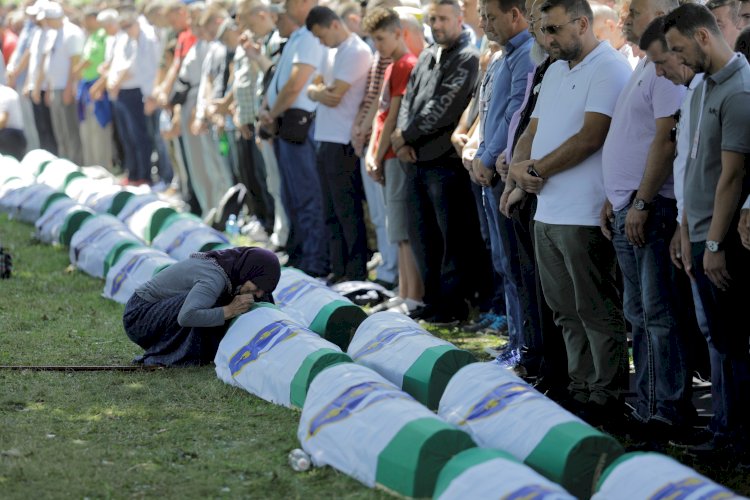
A Historical Viewpoint of the Srebrenica Massacre
The reason behind this was only fierce nationalism and bigotry. Bosnia and Herzegovina had more Muslims then. The area was then part of the Republic of Yugoslavia. The country gained independence in March 1992 through a referendum. After this, a civil war started between Bosnian Muslims, Croats and Serbs. Serbia directly participated in it. The killing of Muslims continued.
Serbs, an ethnic group from Eastern Europe, settled in the region in the 7th century. Bosnia gained independence from Hungary around 1200 AD, and over the next 260 years, it became an independent Christian state. In the 15th century, Sultan Fateh Muhammad brought Bosnia under the Ottoman Empire. Many Christians became Muslims at that time. Since then, the number of Muslims in that area started increasing. Muslims continued to rule Bosnia on behalf of the Ottoman Empire.
At the end of the 19th century, the Ottoman Empire was at war with Russia. Bosnia seceded and fell under the rule of Austria-Hungary. After World War I, the area became part of Yugoslavia. After the separation from the Ottoman Empire, other Muslims from the Balkans migrated to Bosnia. At that time, the number of Jews in the area began to increase.
After Bosnia became independent, the Serb Christians started a civil war against the Muslims. They denied this freedom. On July 11, 1995, the Serbs captured the city of Srebrenica. But this city was a safe area declared by the United Nations. Persecuted Muslims from other parts of Bosnia came here and sought refuge. Dense refugee camps were built in the city.
Because Srebrenica was declared a safe zone by UN resolution 819, UN peacekeepers were deployed there. But in their presence, the Serb forces captured the city. The Dutch peacekeepers were silent then. Though it can't be said to be completely silent, rather, their role was very much in favour of the Serbs (Jan Willem and Norbert Both, 1996). The United Nations then imposed an arms embargo on the area. But the Serbs ignored this ban. The UN troops did not go to attack the Serbs either. Instead, they took away the light weapons that Bosnian resistance fighters had. When the Serb offences intensified, the United Nations gave the resistance fighters a hand. Persecuted Muslims ask the United Nations to return their weapons. But the UN-appointed Dutch commander Thom Karremans rejected the request (Jan Willem and Norbert Both, 1996).
Failure of the UN in the Srebrenica massacre
The United Nations' failure to prevent the Srebrenica massacre stands as a significant blemish on its peacekeeping mission during the Bosnian War. Despite designating Srebrenica as a "safe area" under UN protection, the international community failed to provide adequate security and effectively respond to the unfolding atrocities.
Firstly, there was a severe lack of political will and a reluctance to intervene forcefully. The UN peacekeeping mission in Bosnia, known as UNPROFOR, was limited in its capabilities and heavily dependent on the consent and cooperation of the warring factions. When Bosnian Serb forces, led by General Ratko Mladić, attacked Srebrenica, the UN forces were outnumbered and ill-equipped to defend the population. The Dutch peacekeepers stationed in Srebrenica, part of the UNPROFOR contingent, were undermanned and received insufficient support, leaving them unable to protect the vulnerable Bosnian population effectively.
Secondly, there were significant communication failures and inadequate intelligence sharing within the UN mission. Requests for airstrikes to deter the advancing Bosnian Serb forces were denied, and when the town fell, the peacekeepers did not prevent the separation and subsequent killings of Bosnian people. The lack of coordination and timely response contributed to the tragic outcome in Srebrenica. The failure of the United Nations in Srebrenica underscored the limitations and complexities of peacekeeping missions in the face of ruthless aggression. It prompted a critical reassessment of the UN's approach to conflict resolution and led to subsequent reforms in UN peacekeeping operations to avoid similar failures in the future.
The Gravity of Massacre
From the first day of the occupation of Srebrenica, brutal torture started. From July 11 to July 22, 1995, massacres continued across the city. Refugee camps declared by the United Nations were not left out. In front of the peacekeepers, Serb forces killed and crushed 8372 Bosnian Muslims. On the first day of the massacre, July 11, nearly two thousand men and boys were killed. About 15,000 people fled Srebrenica to the mountains. Later, the Serb soldiers found and killed another 6,000 Muslims from the mountain forest. From 1992 to 1995, more than 200,000 Bosnians were killed and nearly 200,000 refugees were displaced by the attacks of the Serb forces (https://www.britannica.com/event/Bosnian-War). Serbia later apologized for the incident but refused to call it a genocide. But still, when new skeletons are found under the soil of Srebrenica, Serbia is embarrassed. The true colour of European civilisation was unmasked in front of the world.
Holocaust of Muslims
The Srebrenica massacre is often compared to the Holocaust due to its gravity and the systematic nature of the violence perpetrated against a specific group. Both events involved mass killings and ethnic cleansing, targeting a particular religious or ethnic community.
While it is essential to acknowledge the similarities between the two events, it is also important to recognize their unique historical contexts and complexities. The Holocaust, orchestrated by Nazi Germany during World War II, aimed to exterminate European Jews and other targeted groups on a massive scale. The Srebrenica massacre, on the other hand, took place within the context of the Bosnian War, where various ethnic and religious groups were involved in the conflict.
Both events represent horrific instances of genocide and crimes against humanity. The comparison highlights the need to remember and learn from these tragedies, to prevent such acts from recurring and to strive for justice and reconciliation.
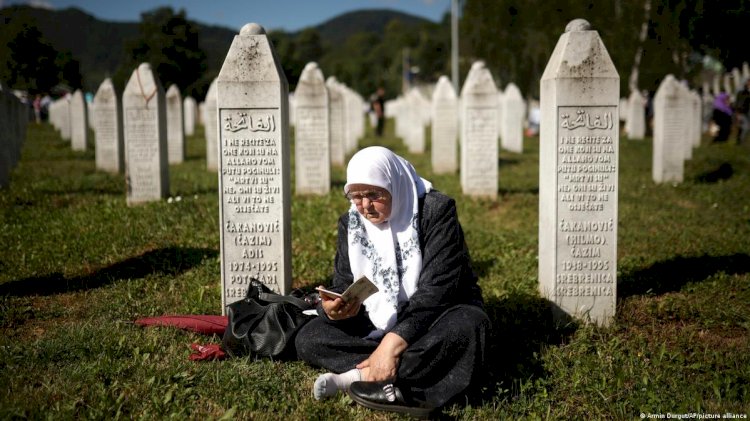
Significance of Remembrance
The remembrance of the Srebrenica massacre holds great significance in ensuring that the tragic events are never forgotten. It is also for standing in solidarity with the victims and their families. Efforts have been made to commemorate the massacre, promote reconciliation, and prevent such atrocities from occurring in the future. Firstly, an annual memorial ceremony takes place in Srebrenica on July 11th, the anniversary of the massacre. Tens of thousands of people gather, including survivors, families of the victims, political leaders, and international representatives, to pay their respects and remember those who lost their lives. The ceremony involves prayers, speeches, and the burial of newly identified victims. It serves as a solemn reminder of the magnitude of the tragedy and provides an opportunity for healing and solidarity.
Additionally, educational initiatives and exhibitions have been established to ensure that the memory of Srebrenica lives on. The Srebrenica Memorial Center, located near the town, serves as a museum and educational institution. It provides a comprehensive account of the massacre, exhibits personal stories, and offers educational programs to promote understanding, tolerance, and peace.
International Day of Remembrance
Beyond Bosnia and Herzegovina, the international community has also played a role in remembering the Srebrenica massacre. The United Nations declared July 11th as the International Day of Remembrance of the Victims of the Srebrenica Genocide. This day is observed globally to honour the victims and to raise awareness about the consequences of hate, intolerance, and genocide. It serves as a platform for advocating justice, prevention of mass atrocities, and the promotion of human rights. Remembering the Srebrenica massacre is crucial to ensure that history is not repeated. It serves as a stark reminder of the consequences of unchecked hatred and the importance of fostering a culture of peace, reconciliation, and respect for human dignity.
The message
Generally, ethnic cleansing acts as an illustration of the catastrophe that resentment, bigotry, and injustice can cause. It emphasises the importance of Muslims, along with other groups coming together to combat prejudice and hatred and foster mutual understanding, respect, and acceptance. The tragedy of Srebrenica underscores the significance of facilitating discussion, establishing empathy bridges, and working for a world that accepts variety and preserves the rights and worth of every person, regardless of religious or ethnic origin. This kind of ethnic cleansing of Muslim minorities has taken place in many nations before and the United Nations and other superpowers failed to bring much-sought peace and resilience to there and provide justice to victims so far. Examples of such heinous events are innumerable, covering Uyghur ethnic cleansing in China, the Gujarat riot in India, the Rohingya genocide in Myanmar, relentless Palestine assaults, etc.
References:
"How Britain and the US decided to abandon Srebrenica to its fate" published in The Guardian, 4 July 2015, www.theguardian.com/world/2015/jul/04/how-britain-and-us-abandoned-srebrenica-massacre-1995.
'The Fall of Srebrenica and the Failure of UN Peacekeeping' by Human Rights Watch published on October, 1995, vol.7.no. 13
'Srebrenica: A Cry from the Grave' by Hasan Nuhanović (Published by Saqi Books, 2005)
'Srebrenica: Record of a War Crime' by Jan Willem Honig and Norbert Both (Published by Penguin Books, 1997)
'Endgame: The Betrayal And Fall Of Srebrenica, Europe's Worst Massacre Since World War II' by David Rohde (published by Penguin books, 1997)
Basaniẏāra srēbrēnikā gaṇahatyā: Pam̐ciśa bachara āgēra nr̥śansatāra galpa (Bosnia's Srebrenica Massacre: The Story of the Atrocity Twenty-Five Years before) by Shah Muhammad Moshahed, Published on BD Views, July,2020.
About the author:
Obaidul Hoque is a PG student at the department of Civilizational Studies, Darul Huda Islamic University.
Disclaimer
The views expressed in this article are the author’s own and do not necessarily mirror Islamonweb’s editorial stance.

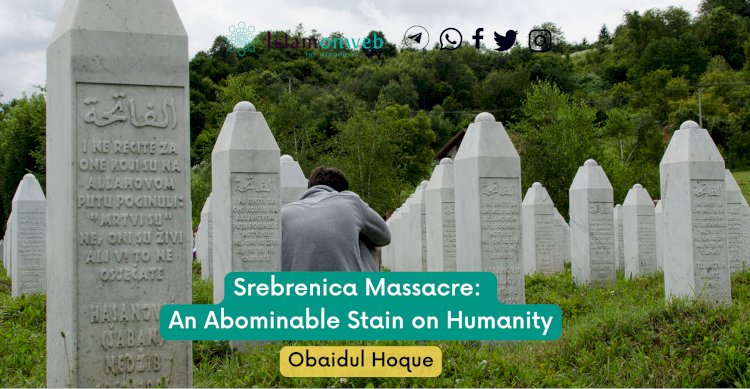


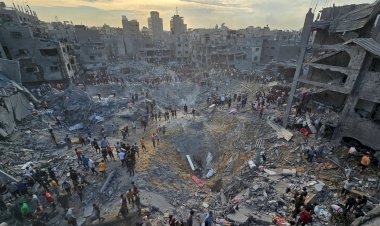
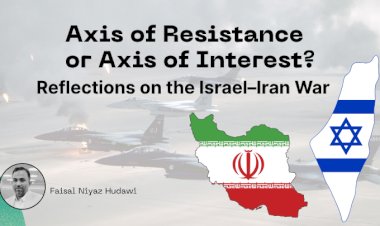
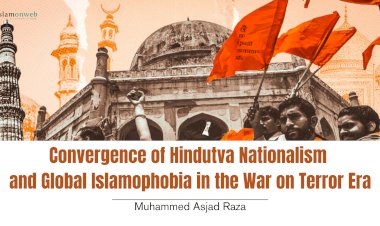
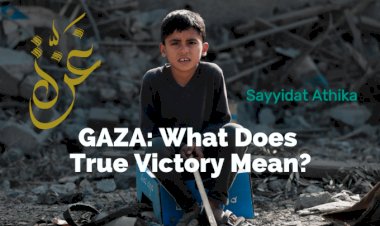
















Leave A Comment